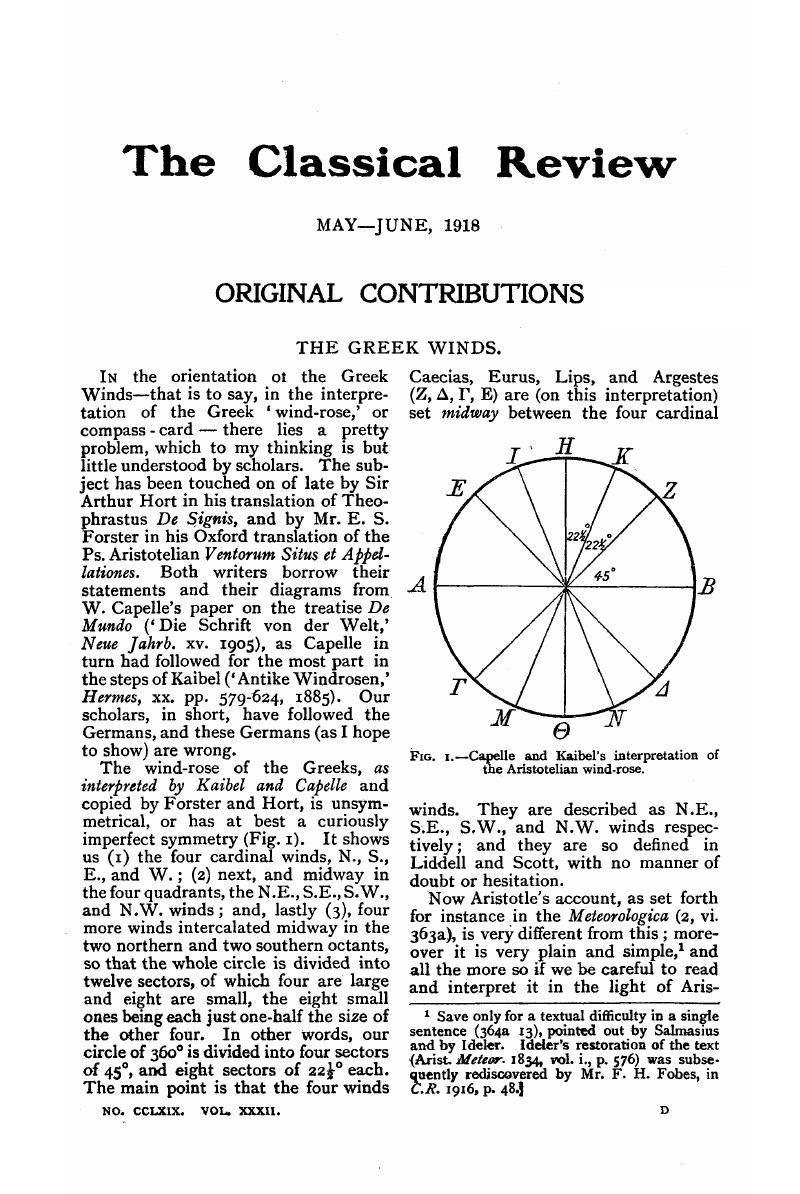Article contents
The Greek Winds
Published online by Cambridge University Press: 27 October 2009
Abstract

- Type
- Review Article
- Information
- Copyright
- Copyright © The Classical Association 1918
References
page 49 note 1 Save only for a textual difficulty in a single sentence (364a 13), pointed out by Salmasius and by Idekr. Ideler's restoration of the text (Arist. Meteor. 1834, vol. i., p. 576)Google Scholar was subsequently rediscovered by MrFobes, F. H., in C.R. 1916, p. 48.Google Scholar
page 53 note 1 In the Old Testament also we have but three winds, N., E., and S.; cf. C. Kassner, Meteorologie der Bibel, Das Wetter, xi. 1892, PP. 25–37; Meteor. Zeitsck. 1894, p. 400.
page 53 note 2 Ct. also Veget. Milit. 5, 8; Auct epigr. in Anthol. Lat. 2, p. 381; Philarg. ad Virg. G. iv. 289, omnes autem venti, praeter enchorios, sunt duodecim.
page 54 note 1 The ‘modern’ compass-card of 32 points is of medieval origin; it came first into use in the Mediterranean, where its history is involved with that of the compass itself. This subject has a copious literature of its own. Cf. (e.g.) D'Avezac, Aperçus historiques sur la Boussole, Bull. Soc. Géogr. Paris, (4) xix. 1860; Ap. histor. sur la Rose des Vents, Bollet. Soc. Geogr. Ital., xi. 1874; Bertelli, P. Tim., Studi storici int. alla Bussola nautica, Mem. Accad. d. N. Lincei, ix. 1893, etc.Google Scholar
page 55 note 1 There is some confusion here, with which we cannot stop to deal. Caecias is out of place; and Pliny has no wind from sunrise at the summer solstice, where Caecias ought to be.
page 56 note 1 Od. xxiii. 195; cf. Maury, Hist, des Relig. de la Grèce, i. p. 167.
page 56 note 2 N. G. Polites, 
page 56 note 3 Cf. (int. al.) Mommsen, A., Neugriechische Bauernregeln, Schleswig, 1873.Google Scholar
- 3
- Cited by




